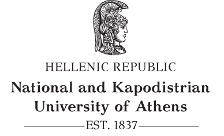- Αρχική
- THE PROGRAM
-
MODULES
- THE ARCHAEOLOGY OF BRONZE AGE AEGEAN (1010)
- KEY THEMES IN EASTERN MEDITERRANEAN ARCHAEOLOGY (1020)
- STATE FORMATION AND THE RISE OF POWER IN AN INSULAR WORLD: THE ARCHAEOLOGY OF MINOAN CRETE (3020)
- THE ARCHAEOLOGY OF MYCENAEAN GREECE (1050)
- COLLAPSE AND TRANSFORMATION: CRISIS, RESILIENCE, AND REORGANIZATION FROM THE LATE THIRD TO EARLY FIRST MILLENNIUM BCE IN THE EASTERN MEDITERRANEAN (3030)
- UNDERSTANDING THE ARCHAEOLOGICAL RECORD: PREHISTORIC CYPRUS AND THE EAST MEDITERRANEAN (2080)
- THE VISUAL CULTURES OF CLASSICAL GREECE (1030)
- ANCIENT GREEK SCULPTURE (1080)
- ATTIC POTTERY OF THE ARCHAIC AND CLASSICAL PERIODS (1090)
- THE ARCHITECTURE OF THE MYSTERY CULTS (2090)
- THE ARCHAEOLOGY OF DEATH IN THE ANCIENT GREEK WORLD (3010)
- STAFF
- ACTIVITIES
- ADMISSION
- RESOURCES
- CONTACT US
- NEWS AND EVENTS
THE ARCHITECTURE OF THE MYSTERY CULTS (2090)
Spring Semester, Optional course, 10 ECTS.
Instructor: Chrysanthos Kanellopoulos
Summary
Greek mystery cult architecture (mysteries of Demeter and Persephone, the Orphic and the Dionysian Mysteries, along with the cult of Asclepios) was less about monumental display and more about creating sacred space for transformative experience. It was designed to support secret rites, initiate personal revelation, and mark the boundary between the mundane and the initiate. The architecture of the mysteries can be identified with spatial progression mimicked the initiate’s spiritual journey, darkness, enclosures and balustrades, hidden chambers all reinforced the sense of sacred secrecy. The architecture supported secrecy and exclusivity, ritual drama and transformation and symbolic spatial progression (e.g., from darkness to light, ignorance to knowledge). The same type of architecture involved large, square halls with a forest of interior columns, benches against the walls that accommodated large groups of initiates, ritual theaters hidden from outside the enclosures, grottos or caves and a general introvercy
Learning outcomes
After the successful completion of the seminar, the students will be able to:
- understand the diversity of types in the architecture of the mysteries.
- identify specific issues of movement within mysteries sanctuaries.
- critically explore the ancient sources in relationship with the architecture of the mysteries.
Syllabus
The course includes the following sections:
- Introduction
- Architectural terminology and introduction to typical Greek architecture A
- Architectural terminology and introduction to typical Greek architecture A Β
- Lecture on the Greek mysteries by dr. Nikou-Philaretos
- Issues of methodology and orientation into the literature
- Analysis of the essays topics
- Discussion of the essays topics
- Excursion to Eleusis
- Discussion and lecture by dr. David Scahill
- Oral presentations of essays- discussion.
Assessement
*Essay: 60%
Oral presentation: 30%
Participation in the excursions to archaeological sites: 10%
*Essay (3.500-5.000 words). A list of indicative topics will be provided, but students are strongly encouraged to discuss and personalize the essay topic with the course coordinator.
Student’s study hours
Lectures:24
Educational visits: 2
Interactive teaching: 10
Study and analysis of bibliography: 80
Cooperation with the instructor: 10
Tutorials: 14
Independent study (incl. project): 30
Essay writing: 80
Course total: 250
Recommended bibliography
Beschi, L. 2004. «Il telesterio ellenistico del Cabirio di Lemno». ASAtene 82: 225-341.
Kahil, L. 1977. «L’ Artémis de Brauron: Rites et mystère», Antk 20: 86-98.
Cosmopoulos, M.B. (ed.) 2013. Greek Mysteries, Archaeology of Secret Cults, London and New York.
Bookidis, N. 2011. «The sanctuary of Demeter and Kore at Corinth: A Review and an Update». In: Ιερά και Λατρείες της Δήμητρας στον Αρχαίο Ελληνικό Κόσμο, επιμ. Ι. Λεβέντη και Χ. Μητσοπούλου, 137-54. Βόλος.
Friese, W. and Kristensen, T.M. 2017. ArchaeologiesofPilgrimage. London and New York.
Κουρουνιώτης, Κ. 1912. «Τὸ ἐν Λυκοσούρᾳ Μέγαρον τῆς Δεσποίνης». ArchEphem:142–61.
Mylonas, G.E. 1961. Eleusis and the Eleusinian Mysteries. Princeton.
Nielsen, I. 2014. Housing the Chosen: The Architectural Context of Mystery Groups and Religious Associations in the Ancient World. Turnhout.
Noack, F. 1927. Eleusis, die baugeschichtliche Entwicklung des Heiligtums; Aufnahmen und Untersuchungen. Berlin.
Wescoat, B.D. and R.G. Ousterhout (eds.) 2012. Architecture of the Sacred: Space, Ritual, and Experience from Classical Greece to Byzantium. Cambridge.
